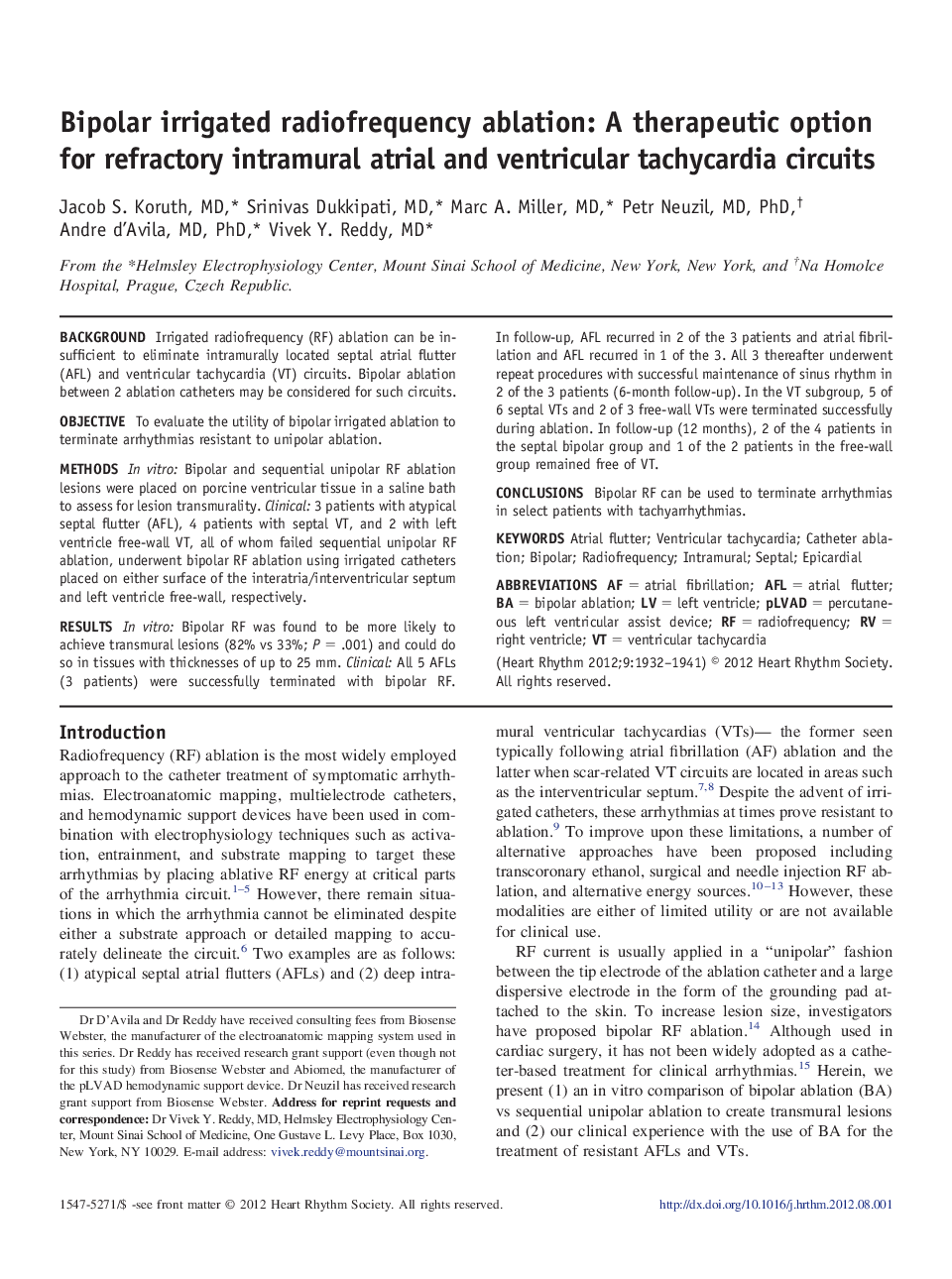| Article ID | Journal | Published Year | Pages | File Type |
|---|---|---|---|---|
| 2922750 | Heart Rhythm | 2012 | 10 Pages |
BackgroundIrrigated radiofrequency (RF) ablation can be insufficient to eliminate intramurally located septal atrial flutter (AFL) and ventricular tachycardia (VT) circuits. Bipolar ablation between 2 ablation catheters may be considered for such circuits.ObjectiveTo evaluate the utility of bipolar irrigated ablation to terminate arrhythmias resistant to unipolar ablation.MethodsIn vitro: Bipolar and sequential unipolar RF ablation lesions were placed on porcine ventricular tissue in a saline bath to assess for lesion transmurality. Clinical: 3 patients with atypical septal flutter (AFL), 4 patients with septal VT, and 2 with left ventricle free-wall VT, all of whom failed sequential unipolar RF ablation, underwent bipolar RF ablation using irrigated catheters placed on either surface of the interatria/interventricular septum and left ventricle free-wall, respectively.ResultsIn vitro: Bipolar RF was found to be more likely to achieve transmural lesions (82% vs 33%; P = .001) and could do so in tissues with thicknesses of up to 25 mm. Clinical: All 5 AFLs (3 patients) were successfully terminated with bipolar RF. In follow-up, AFL recurred in 2 of the 3 patients and atrial fibrillation and AFL recurred in 1 of the 3. All 3 thereafter underwent repeat procedures with successful maintenance of sinus rhythm in 2 of the 3 patients (6-month follow-up). In the VT subgroup, 5 of 6 septal VTs and 2 of 3 free-wall VTs were terminated successfully during ablation. In follow-up (12 months), 2 of the 4 patients in the septal bipolar group and 1 of the 2 patients in the free-wall group remained free of VT.ConclusionsBipolar RF can be used to terminate arrhythmias in select patients with tachyarrhythmias.
